FRUSTRATED WITH FAKE NEWS? THIS IS YOUR CHANCE TO DO SOMETHING ABOUT IT!
If you are someone who believes the media refuses to give a fair shake and just report the facts, then consider supporting The Iowa Standard.
The Iowa Standard is a free online news source so we can reach as many people as possible. But we need to raise money! We are asking our readers to help support us as a news alternative entering 2020. If you could, please consider showing a sign of support to The Iowa Standard by making a contribution here. Or, you can use Venmo and make a contribution to @Iowa-Standard-2018.
You could also send a check to:
PO Box 112
Sioux Center, IA 51250
In February 2018, the University of Iowa Public Policy Center issued a report on LGBTQ Student Experiences in the Iowa City Community School District (ICCSD). The report was done by a multi-stakeholder task force.
The authors of the report were Sarah Bruch, director of the social and education policy research program at the Public Policy Center. She’s an assistant professor in the Department of Sociology at Iowa.
Tessa Heeren, a research associate at the Public Policy Center.
Austin James Dyami Adams was a fourth-year undergraduate student at Iowa. He was pursuing degrees in political science, ethics and public policy and economics.
Natalie Veldhouse was a second-year master of social work student.
The task force was motivated by the finding of systematic and patterned disparities between LGB and non-LGB students, as well as between non-binary gender identified students and male and female-identified students in the 2017 assessing student experiences of school report.
The ICCSD Board of Education supported the assembly of the task force to assess and prioritize potential strategies to promote greater equity in student experiences and ensure all students are able to thrive in ICCSD schools.
The LGBTQ Task Force was the second task force convened by the Equity Implemented Partnership to collect and synthesize input from diverse sets of stakeholders to inform the district on decision-making on equity-related topics.
The research team recruited task force members. There was targeted recruitment of organizations that provide services or resources specifically to LGBTQ populations, or who have experience working with LGBTQ populations.
There was a desire to achieve a “diverse” taskforce with majority-LGBTQ representation taken into consideration.
Sixty-three completed applications were reviewed. Forty-one people were selected to represent the various stakeholder positions.
The report states that the task force members were purposefully recruited to reflect a range of identities and backgrounds, since it was focused on improving experiences for LGBTQ students. A majority of the task force identified as LGB or non-binary.
Statements in the report indicate the task force included “very few men.” The task force was also a “very white group.”
In the 2016-17 Student Experiences of School Climate survey, eight percent of students identified as LGB (lesbian, gay, bisexual). Two percent identified as non-binary in terms of gender identity.
We will share articles throughout the day about the report’s findings and subsequent efforts to push LGBTQ indoctrination in the ICCSD.
PART 2: TASK FORCE WANTS DISTRICT FUNDS FOR GAY-STRAIGHT ALLIANCES, FORM GSAs IN ELEMENTARY SCHOOLS
One of the areas of recommendation issued by the task force is to support students and student groups by ensuring access to adult advocates in every school.
The first recommendation is to identify and support LGBTQ-specific adult advocates in each school. The task force says, “each building should have a designated safe adult to contact if LGBTQIA+ issues come up.”
Another quote from the report, “we need visible advocates for LGBTQ students and their families. Hire LGBTQ+ advocates.”
The report also addresses students going through gender transition, noting those students have particular health needs.
“School staff should be educated on meeting those needs and managing medications related to gender transitions,” it says. “If a student is transitioning and taking hormones, the nurses should know how to handle it and what to do.”
The report calls on LGBTQ students having access to “specialized supports and mental health resources.”
Finally, the report wants to see an LGBTQ student ambassador in each school who would advocate for the interests of LGBTQ students and act as a resource for peers.
One big portion of this recommendation includes the formation of gay-straight alliance groups (GSAs). The report noted that 100 percent of high schools and junior high schools in ICCSD have GSA groups. No elementary school had one at the time of the report.
The task force highlights three specific ways ICCSD could further support GSAs.
“Improve GSA programming, increase district funding for GSA activities and encouraging the development of GSAs in district elementary schools.”
Funding for the GSA groups would help students attend the annual Iowa Governor’s Conference on LGBTQ Youth hosted by GLBT Youth In Iowa Schools Tack Force (Iowa Safe Schools). That conference was once investigated by the Iowa House.
“GSAs should be supported, financially and through promotional materials, because they are an important resource for students,” the report says.
The task force unanimously agreed that LGBTQ student groups cannot meet their full potential without adequate funding from the district, which it says may need to be supplemented by building level funds.
“Increased district funding of GSAs is one of the clearest ways that the district could support the GSAs in achieving their goals and supporting LGBTQ students,” the report says.
Establishing GSAs in the elementary schools is needed, according to the task force, to support younger LGBTQ students. It would also increase the inclusivity of the school climate through GSA programming. The group is concerned because, according to a recent national student of elementary teachers and students, almost 50 percent of students and teachers reported hearing comments like “that’s so gay” or “you’re so gay.”
This section of the report also noted the needs of LGBTQ students of color.
“I miss hearing kids of double vulnerability (African American and gay or lesbian) they have different perspective (sic) from GBLTQ who are from the white majority. They suffer more harassment, achievement gap and suicide tendency.”
In all, the report lists 16 different national awareness campaigns, including pansexual awareness day.
The task force identified a number of current practices in school that limited the visibility of GSAs and pointed to substantial differences in social recognition that certain student groups and sports teams receive.
It called for inclusion in all school materials and events, and celebration of LGBTQ student achievements.
“Equitable visibility at all schools should be a priority,” the report says. “More support and visibility for GSAs — both monetary and moral support.”
It also encouraged students building connections with the larger community LGBTQ groups.
PART 3: EVERY GRADE, EVERY SUBJECT NEEDS LGBTQ INCLUSIVE CURRICULUM, ADAPT CURRICULUM FOR KINDERGARTNERS INCLUDING SAME-SEX PARENTS
The task force report from the Public Policy Center of the University of Iowa regarding LGBTQ students in the Iowa City Community School District made “enhancing the inclusiveness of the curriculum” a big goal.
In fact, the task force calls it an “essential component” of any effort to create safe and LGBTQ-inclusive schools.
The hope is that including positive representations of LGBTQ-related topics in the curriculum will positively affect LGBTQ students.
One claim by the report is that there are “substantial percentages” of students who report there are no opportunities in class to talk about gender, sexual orientation beyond heterosexuality, and transgender identity.
“The task force saw enhancing the inclusiveness of the curriculum in the ICCSD as a necessary step for the district to take in order to support LGBTQ students and educate all students about LGBTQ-related topics,” it said.
And this is how it can be done:
1. Invest in the integration of an LGBTQ-inclusive curriculum
2. Adapt current content
3. Make libraries more LGBTQ-inclusive
4. Incorporate inclusive teaching practices
More money for new curriculum, that’s what the task force says is needed.
“The strategy that garnered the most support from the Task Force was to invest in LGBTQ-inclusive curricula, resources, textbooks, literature, and exercises into every grade and subject area.”
One of the best ways to ensure curricular materials are inclusive of gender identity and sexual orientation diversity, it said, is to purchase recently developed materials that reflect “advances in knowledge and societal awareness related to the LGBTQ issues.”
“The lack of inclusion in curriculum materials and content can be a clear signal to students that people similar to themselves, who share their characteristics or identities, are not important enough to be included,” the report states.
One student task force member said, “why isn’t my history talked about with everyone else’s?”
The report also called for updating the curriculum review process. The task force recommended the existing district process be used strategically to make the curriculum across all subjects more LGBTQ-inclusive.
“Specific ways to do this are to ensure that the curriculum review self-study committee members represent diverse perspectives, and include input from content specialists, individuals who identify as LGBTQ, and students,” it states.
Task force members were “certain” that LGBTQ inclusivity could be applied at ALL grade levels and across ALL subjects.
“They saw potential for including LGBTQ material into the Common Core structure, through the use of existing scaffolding in a developmentally appropriate way,” the report states. “For example, adapting curriculum for kindergartners about family structure to include same-sex parents and other diverse family structures.”
ICCSD health classes cover “human sexuality including male and female reproductive systems,” according to current syllabi the report says. Task force members discussed the importance of including information about “diverse sexualities and genders” in health and sex ed classes, emphasizing that LGBTQ issues and needs should be included in safe sex and self-care practices. They also specifically emphasized the need to clarify the difference between sex and gender in class (i.e. teaching that gender is a social construct).
In addition, task force members suggest starting health education before high school.
Later in the report, task force members strongly advocate for adjusting the current administrative process to be inclusive of LGBTQ student identities and experiences. One way to do this is by using a student’s authentic name, gender identity and pronoun in student records.
A student’s “authentic name” and pronouns should be the default name displayed for any situations (i.e. class roster, student ID card) that do not require a legal name, the report states. Task force members don’t refer to “preferred pronouns” or “preferred name” because it is “not fully supportive of students because it implies that a students’ gender identity is a choice.
The task force did recognize legal issues with potential changes to school records. One issue, it says, is the balancing of authority and rights between students and parents.
“Determining who has the authority to change and know students’ authentic name and pronouns is both highly personal and sensitive but is also a legal issue,” the report says. “Accommodations might need to be made for a student who wants to change their name or pronouns in their student records, but also wishes to keep that information confidential from parents or guardians.”
PART 4: SCHOOL STAFF WOULD NEED TRAINING, UNLEARN PREJUDICE, AND FUNDAMENTAL UNDERSTANDING OF SOCIAL JUSICE
We’ve told you about the University of Iowa’s Public Policy Center report detailing how the Iowa City Community School District needs to have a more enhanced inclusive curriculum.
It doesn’t end there.
Task force members discussed diversifying courses offered by offering classes on LGBTQ history or race, class and gender.
“They also stressed that these courses would be available to all students, serving the dual purpose of representing and validating the experiences of LGBTQ students, and educating non-LGBTQ students,” it says.
However, a prerequisite for adding “more inclusive courses” would include teacher training in empathy, anti-bullying and LGBTQ terminology and experiences, and clear district support.
Another goal is to make school libraries more LGBTQ-inclusive. And they don’t want a section of LGBTQ-related books in the library, they want the books scattered throughout the library.
“Task force members emphasized the importance of integrating (i.e. not a dedicated section) LGBTQ inclusive books in the library, to reinforce the idea that the materials are for all students, and not exclusive or targeted to students who identify as LGBTQ,” the report says.
ICCSD’s library probably is already in alignment with this strategy, according to the report.
Teachers were also a key point of emphasis in the report. Task force members anticipated that the fidelity of implementing an inclusive curriculum would vary by individual teachers, the report says, depending on factors such as “differing levels of efficacy and comfort discussing LGBTQ topics, or conflicting personal ideologies.”
To address that concern, the task force emphasized the importance of clear district support and teacher training to “facilitate the implementation of curriculum changes. Specifically, teacher training would be needed to ensure that all teachers are equipped to:
1. Be comfortable using LGBTQ related language effectively
2. Be familiar with LGBTQ concepts and issues
3. Understand the rationale for inclusion in class materials, and
4. Moderate classroom discussions stimulated by inclusive content in a culturally competent way.
The task force believes teacher hesitation to incorporate an LGBTQ inclusive curriculum is related to perceptions of unfavorable reception from certain parents or community members.
“Staff cannot opt out of curriculum components, and should be supported and trained to teach this material,” the report says.
Members of the task force suggested teachers encourage students to think about whose voices are represented in readings, and whose are missing.
“A concern was expressed that if teachers do not have a foundational understanding of social justice, ensuring the implementation quality and consistency of this strategy would be difficult,” the report says. “A prerequisite of this approach would be to provide empathy and LGBTQ terminology training and support to teachers.”
That said, improving educator knowledge and skills is critical.
Workshops, webinars and trainings were recommended for staff.
“Professional development workshops and trainings include opportunities such as Safe Zone Trainings, which are designed to teach participants about LGBTQ+ identities, gender and sexuality, and unlearn prejudice,” the report states.
And these trainings apply to K-12 teachers. Oh, and not just teachers. But also coaches, paraeducators, counselors, etc. The workshops should be an annual event, the report adds.
In addition, one task force member suggested the speaker making announcements at school say “this week, we are thinking about (health, bullying, gender, home, lunch, etc.) and we want to know what you think. Your three questions are… please have your submissions in via email by (day of the week).”
The report states it would be a good way to understand what needs should be addressed.
PART 5: REPORT SAYS TO ADD GENDER-NEUTRAL FACILITIES, DON’T SEPARATE HOMECOMING COURT BY GENDER
If you’re following along, we’ve been detailing efforts to push LGBTQ indoctrination in Iowa City schools. This next article will focus on the section creating supportive and inclusive school environments.
First up, ensuring a school has norms and values that support LGBTQ students, which requires schools to have gender and sexuality inclusive norms that avoid distinguishing roles according to student’s or educator’s sex or gender.
They do NOT want the gender binary idea to be reinforced. That’s the classification of sex and gender into two distinct, opposite and disconnected forms of masculine and feminine.
And they also do NOT want schools reinforcing heteronormativity, the belief that people must be either male or female and that heterosexuality is the only or should be the only sexual orientation.
Another goal for the task force is gender-neutral restrooms. But that’s not all. The report quotes the American Psychological Association and the National Association of School Psychologists, who recommend:
“Allowing all students, staff and teachers to have access to the sex-segregated facilities, activities and programs that are consistent with their gender identity, including, but not limited to, bathrooms, locker rooms, sports teams, and classroom activities, and avoiding the use of gender segregation in school uniforms, school dances, and extracurricular activities, and providing gender-neutral bathroom options for individuals who would prefer to use them.”
The task force members talked about the importance of describing those restrooms as “gender-inclusive” rather than “gender-neutral.”
In the fall of 2017, Iowa City City High created a gender-neutral bathroom. It converted a male restroom and added private stalls. The estimated cost of converting that restroom was $1,516. The report encourages the district to add gender-neutral restrooms throughout the district.
Events, extracurricular activities and sports were next. The report even takes on the idea of having a homecoming court separated by gender.
“The task force believes the district should discontinue the separation of activities like homecoming court by gender and avoid gender-specific language in promotions for school activities like sports.
PART 6: DISTRICT HAS MADE SIGNIFICANT PROGRESS AND ACTED ON RECOMMENDATIONS, IMPROVED ‘INCLUSIVITY’ OF HOMECOMING COURT
Throughout the day we have reported on a February 2018 report from the University of Iowa’s Public Policy Center and its recommendations for the Iowa City Community School District.
According to a document available online, the district is in the process of implementing the recommendations of the 2018 LGBTQ multi-stakeholder 2018 task force.
The district provided transportation to more than 90 students to the 14th annual LGBTQ Youth Governor’s conference in Des Moines, hosted by GLBT Youth In Iowa Schools Task Force (Iowa Safe Schools).
The district has included all gay-straight alliance groups on its school website.
Additionally, the district has increased the amount of LGBTQ materials in library collections.
Safe Zone Phase I training has been given to 30 staff members. The district has created gender-neutral restrooms and “improved inclusivity of homecoming court.”
The board issued a policy statement just two months after the recommendations were given and an LGBTQ tab was added to the Equity Department website.
Efforts still in progress are building connections with larger LGBTQ organizations, offering classes on LGBTQ history or race, class and gender, student-led workshops and ensuring authentic names/pronouns are reflected in school records.
The “next step,” it says, is an inclusive curriculum and health education.


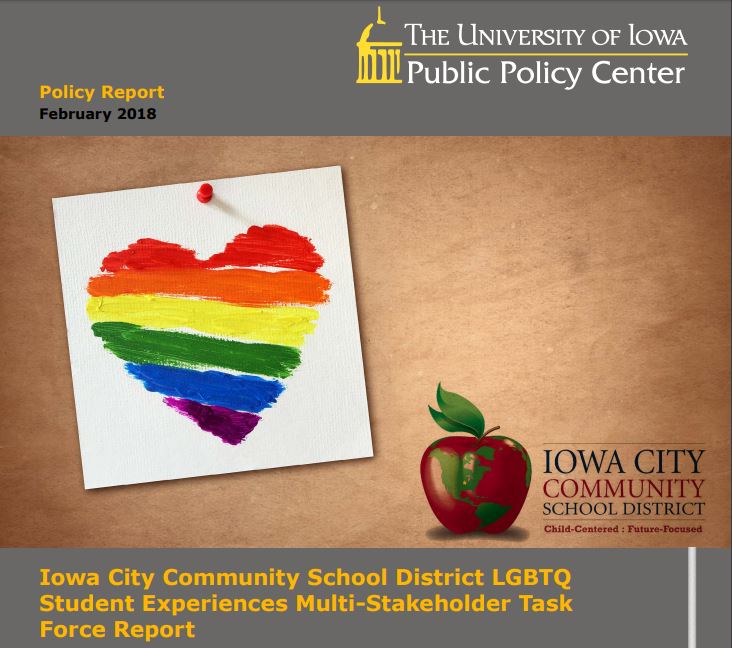


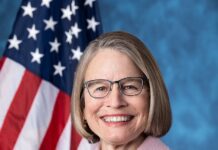
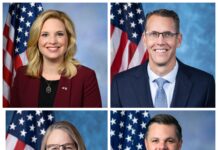
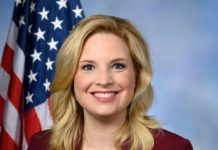
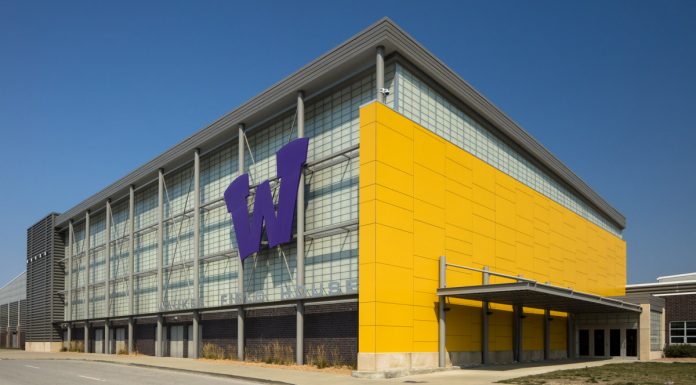




[…] Policy Center report for Iowa City Schools from a couple of years ago that detailed goals to get LGBTQ issues into the curriculum of every subject at every […]
[…] Policy Center report for Iowa City Schools from a couple of years ago that detailed goals to get LGBTQ issues into the curriculum of every subject at every […]